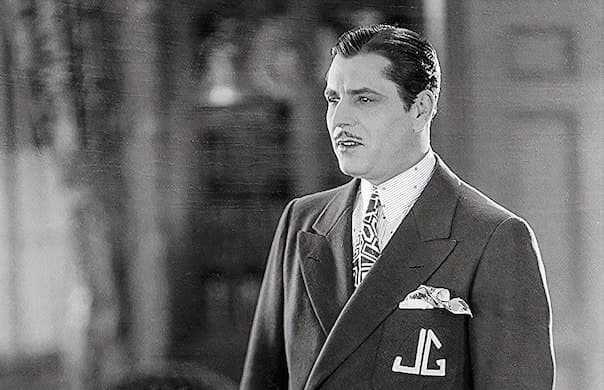Salvaging a Troubled Star of Early Hollywood
Warner Baxter pursued stardom as intensely as his male contemporaries, but he did not have the stamina that attended the success of contemporaries like Clark Gable and James Cagney.

‘The Accidental Star: The Life and Films of Warner Baxter’
By Dan Van Neste
BearManor Media, 498 pages
One of the important Hollywood stars and leading men of the 1930s, winner of an Academy Award, appearances in 104 silent and sound films, and yet until now there has been no biography of Warner Baxter.
Dan Van Neste provides a chapter that speculates on the neglect of his subject. Few of Baxter’s films are available in VHS and DVD formats, and the cable movie channels do not regularly show his films. Mr. Van Neste notes that many of Baxter’s silent films have been lost. Then, too, the versatile Baxter did not establish a stable screen persona, and certain critics have dismissed him as having little charisma.
I would add a few more reasons for Baxter’s eclipse: His Academy Award-winning portrayal of the Cisco Kid is in “Old Arizona” — not a film on anyone’s Top 10 list, though Mr. Van Neste makes a good case for it. Baxter pursued stardom as intensely as his male contemporaries, but he did not have the stamina that attended the success of contemporaries like Clark Gable and James Cagney. The unsteady Baxter, beset with doubts, dropped from public view at crucial times in his career.
As a biographical subject, Baxter is fascinating. He brought to the screen a powerful depiction of the gentleman hero that Ronald Colman had perfected as early as “The White Sister” (1923). Baxter idolized Colman and patterned himself after his mentor, dressing like him, adopting that same pencil-thin mustache, and sometimes exuding the Colman-like charm that beguiled generations of women who longed for him and men who wanted to be him.
Yet Baxter the man and the actor had a brooding, troubled quality that perhaps put off some moviegoers. In two of his best films, “The Road to Glory” and “Slave Ship,” he plays heroes with divided sensibilities — in the first an Army officer played out after the depredations of World War I, and in the second a conflicted slaver who renounces his illegal traffic in human cargo for the love of young woman who brings him back to a full sense of humanity.
Such roles required an intensity of preparation that exhausted Baxter, who never seemed to be able to take his work as other than a test of both his talent and his character. As a result, he suffered his roles, always fearing failure and supposing — even when at the top of his popularity — that he was about to lose his place in the hierarchy of stardom.
As the diligent and perceptive Mr. Van Neste shows, Baxter was able to relax into his roles only when he abandoned his A-list ambitions and signed a contract with Columbia Pictures to do a Crime Doctor series of B-programmers, starring in 10 films about a psychiatrist-detective, Dr. Robert Ordway,
Added to Baxter’s frequent mental breakdowns were a series of accidents in the making of his films and then the onset of arthritis and prostate cancer. It seemed, as Mr. Van Neste suggests, that Baxter often thought of himself as on the verge of death.
In addition to offering a superb narrative of Baxter’s life and career, starting with his early years in Ohio and running all the way to his tight circle of friends that included not only Colman but also William Powell and Tim McCoy, a star of Westerns, Mr. Van Neste includes a separate section on all of Baxter’s films, including cast lists, directors, screenwriters, plot summaries, a list of reviews, production notes, interesting facts, and trivia.
Thus Mr. Van Neste has produced not only an entertaining and perceptive narrative, but a reference book with material that often does not make it into a biographer’s narrative. In the case of the first biography of a subject, this additional information is most welcome and instructive.
Beyond the biographer’s story, what makes this book significant is the careful attention to accuracy, pointing out errors and misperceptions in Baxter’s biography — also making Mr. Van Neste’s book a fine contribution to a reliable history of Hollywood.
Mr. Rollyson’s work in progress is a biography of Ronald Colman.

